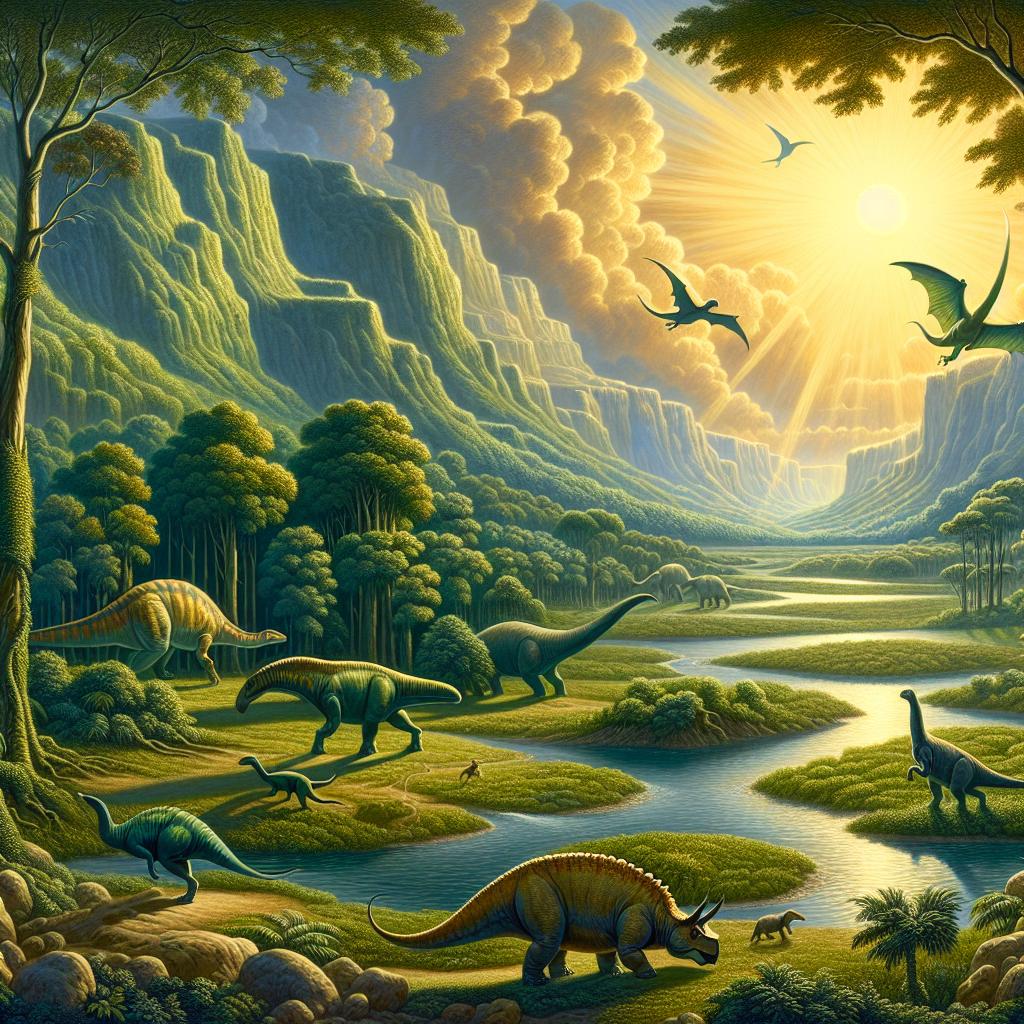
Uncovering God's Wonders: Exploring the Divine Era of Dinosaurs
Published: 22 August 2024
The So-Called 'Age of Dinosaurs'
Dinosaurs have long fascinated both Christians and non-believers, often sparking questions about their existence and the supposed 'Age of Dinosaurs'. In this article, we will explore eight key questions surrounding dinosaurs from a staunchly conservative, biblical perspective.
1. Did Dinosaurs Coexist with Other Creatures?
Contrary to popular belief, evidence suggests that dinosaurs coexisted with a variety of other creatures. Fossils discovered in 'dinosaur-era' rock layers have revealed the presence of ducks, squirrels, platypus, beaver-like creatures, and more. These findings challenge the notion that dinosaurs ruled the earth in isolation. Instead, they point to a world where various creatures lived and died together.
2. What Does the Fossil Record Reveal?
The fossil record provides valuable insights into the coexistence of dinosaurs and other creatures. For example, Gansus, a creature supposedly 120 million years old, closely resembles modern-day ducks or loons. However, some evolutionary paleontologists dismiss its classification as a duck due to the preconceived notion of an 'age of dinosaurs.' It is important to evaluate the evidence objectively and consider whether it supports the coexistence of different species.
3. Why Were Mammals Overlooked in 'Dinosaur Rock'?
Many mammal fossils have been found in 'dinosaur rock,' yet they were often overlooked or underrepresented in museum displays. Paleontologists specializing in reptiles and dinosaurs focused their research on those particular groups. As a result, thousands of pounds of bentonite clay containing mammal fossils remain unexplored. This limited focus has hindered our understanding of the coexistence of dinosaurs and mammals during that time.
4. How Did Dinosaurs and Mammals Coexist?
Contrary to the belief that mammals appeared only after dinosaurs became extinct, evidence suggests that mammals lived alongside dinosaurs. Paleontologists acknowledge that mammals not only coexisted with dinosaurs but also survived their reign. The 'Age of Dinosaurs' is a misnomer since it fails to acknowledge the simultaneous existence of various groups, including mammals.
5. What Caused the Extinction of Dinosaurs?
Evolutionary scientists have proposed several explanations for the extinction of dinosaurs, such as a large asteroid collision, climate change, or predation by mammals. However, each explanation has limitations and fails to provide a comprehensive answer. Creationists propose that the mass extinction event described in the Bible's account of the Flood is responsible for the decline of dinosaurs. By considering the substantial evidence supporting this global catastrophe, we can better understand the fate of dinosaurs.
6. How Did Dinosaurs Adapt After the Flood?
The Flood significantly impacted all surviving animals, including dinosaurs. With their numbers greatly reduced, dinosaurs faced numerous challenges, such as varying climates and habitat changes. Their unique physiology may have limited their ability to adapt rapidly to these post-Flood conditions. Evolutionists speculate that dinosaurs possessed a distinct metabolism unlike any living animals today. This could have contributed to their eventual extinction, along with factors such as hunting, disease, and climatic changes.
7. Are There Historical Depictions of Dinosaurs?
Surprisingly, historical depictions of dinosaurs have been found in various cultures. For instance, there is evidence of dinosaur depictions in England from the 1400s and a stegosaur carving in Cambodia that dates back centuries. These findings challenge the widely accepted belief that dinosaurs became extinct 65 million years ago. Such historical depictions align with the biblical timeline and suggest that dinosaurs may have survived until relatively recent times.
8. What Does Soft Tissue Preservation Reveal?
The discovery of soft tissue preservation within dinosaur fossils raises intriguing questions about their age. Soft tissues, including stretchy ligaments, flexible blood vessels, and intact red blood cells, have been found in dinosaur remains. These findings contradict the notion that fossils are millions of years old and suggest a more recent origin. Soft tissue preservation provides compelling evidence that dinosaurs lived more recently than conventionally believed.
In conclusion, a biblical perspective offers a comprehensive explanation for the existence and extinction of dinosaurs. The coexistence of dinosaurs with other creatures is supported by fossil evidence, challenging the traditional understanding of an 'Age of Dinosaurs.' The Flood described in Genesis provides a plausible explanation for their decline, with post-Flood conditions contributing to their eventual extinction. Historical depictions and the discovery of soft tissue preservation further support the idea that dinosaurs lived much more recently than commonly assumed. By embracing a Christian worldview, we can view dinosaurs through the lens of God's Word and gain a deeper understanding of their place in history.
Remember, as Christians, it is essential to approach scientific discoveries with discernment and align them with biblical truths. Ultimately, the Bible provides a more reliable and coherent explanation for the existence and extinction of dinosaurs than the evolutionary view.
May we continue to explore God's creation with reverence and awe, seeking to understand His handiwork through both science and Scripture.
"For from him and through him and to him are all things. To him be glory forever. Amen." - Romans 11:36
